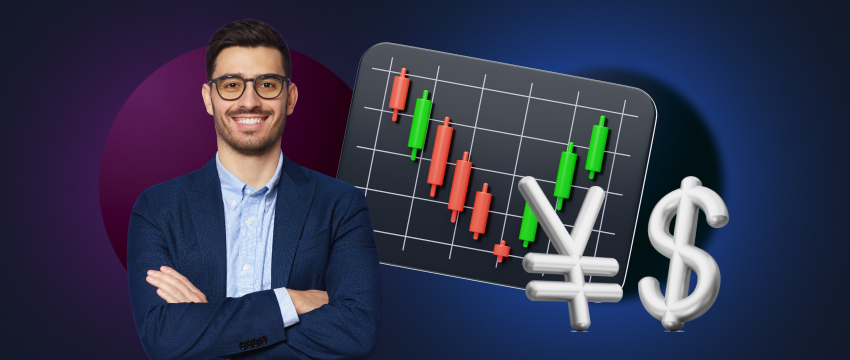In what is a rapidly evolving financial and technological landscape, digital currencies have quickly gained popularity, particularly in regions where people have little to no access to traditional financial systems. This article seeks to shed light on what digital currencies are, how they work, and the underlying technology behind them.
Understanding digital currencies
Also known as cryptocurrencies, digital currencies are a type of currency available in electronic or digital forms. They make up a decentralised financial ecosystem and have transformed the way people transact and store value. The system is generally considered more secure and transparent than its centralised counterpart, i.e., traditional financial systems. Digital currencies operate on the blockchain, and transactions are secured using cryptographic technology. The first cryptocurrency to be created was Bitcoin in 2009, which continues to retain its popularity today. Since then, thousands of other cryptocurrencies have been developed, impacting the global economy significantly, and reshaping the future of finance.
More on blockchain technology
Blockchain technology is at the core of digital currencies. It is a distributed ledger that records all transactions across a network of computers (nodes) that communicate with each other to validate and confirm transactions. Each transaction, known as a block, is added to a chain of previous transactions, forming an immutable record (cannot be changed or erased). This decentralized nature eliminates the need for intermediaries like banks or centralised governmental bodies. The technology also seeks to ensure transparency and security.

Cryptographic security
Cryptocurrencies rely on complex cryptographic algorithms to secure transactions and control the creation of new units. Cryptography ensures that transactions are tamper-proof and that digital currencies cannot be counterfeited. It also allows users to have control over their funds. This is made possible by public and private cryptographic keys. The keys are also used to secure and protect sensitive information by enabling encryption and decryption processes. A cryptographic key is a unique value or a sequence of bits that serves as input to an encryption algorithm, allowing data to be encoded and subsequently decoded.
Popular digital currencies
Bitcoin
Bitcoin is the pioneer of cryptocurrencies that revolutionised the way money is transacted. Developed in 2009, bitcoin operates on the principles of decentralisation, transparency, and peer-to-peer transactions. Bitcoin does have a limited supply, however. Capped at 21 million coins, this makes the digital currency less vulnerable to inflation associated with traditional currencies. Bitcoin transactions are recorded on the blockchain, which is maintained by a network of computers called miners. Miners validate and bundle transactions into blocks, which are added to the blockchain.
Bitcoin mining requires powerful computers to solve complex mathematical puzzles that validate transactions and secure the network. Miners compete to solve these puzzles, and the first one to find a solution gets to add a new block to the blockchain. Different types of cryptocurrency mining exist, including ASIC mining, GPU mining, CPU mining, Mining pools, Solo mining, and Cloud mining.

Ethereum
Launched after Bitcoin in 2015, Ethereum is popular not only as a form of digital currency but also as a platform used by developers to build dApps (decentralised applications) using blockchain technology. ETH (Ether) is the currency of Ethereum. It is used to pay for transactions on the Ethereum blockchain. Furthermore, Ethereum also bought with it the idea of smart contracts. These are a form of self-executing contracts that are run on the Ethereum blockchain. Developed using code and data, they can be programmed to execute when specific conditions have been met.
Cardano and Polkadot
The development of Cardano and Polkadot focused on addressing the challenges of Bitcoin and Ethereum, primarily scalability (to handle a higher number of transactions) and interoperability (the ability of different cryptocurrencies to communicate and transact with each other).
Ripple
Ripple focuses on facilitating fast and low-cost international money transfers. This is achieved through blockchain technology and modern APIs. Financial institutions that are part of RippleNet can process transactions globally for fractions of a penny, instantly and easily. The cryptocurrency of Ripple is called XRP which runs on an XRP ledger, a blockchain engineered by Jed McCaleb, Arthur Britto and David Schwartz.

Litecoin
Litecoin is a cryptocurrency that was released with 150 pre-mined coins. The basis of its development was to provide faster transaction confirmation times compared to Bitcoin. Litecoin has a maximum supply of 84 million coins. The supply of Litecoin is said to reduce overtime to preserve the value of this digital currency. The cryptocurrency’s blockchain takes two and a half minutes to generate a new block.
Frequently asked questions
1. What does decentralisation mean relative to cryptocurrencies?
The transfer of control or decision-making from a centralised body or system, e.g., banks or government, to a distributed network.
2. Why is transparency key?
Transparency ensures all transactions are visible to all members of the network and that the validity of all transactions can be verified by anyone.
3. Why is blockchain considered secure from unauthorised access or tampering?
This is largely due to the application of 3 primary principles, namely decentralisation, cryptography, and consensus.
4. What does immutability mean?
Immutability implies that once a transaction is recorded on the blockchain, it cannot be altered or erased.
5. What is decentralised finance?
Decentralised finance (DeFi) is a financial technology built on the blockchain that seeks to remove 3rd parties and centralised institutions from financial transactions. Transactions are handled by applications named dApps.
6. What are dApps?
dApps are decentralised applications powered by Ethereum. They are used for a diverse range of activities including financial transactions, social media, and even gaming.
Conclusion
In conclusion, digital currencies have transformed the way we perceive and engage with money. Bitcoin, together with other cryptocurrencies, has paved the way for a decentralized financial system that operates outside the control of traditional institutions.
However, while digital currencies offer exciting possibilities, they also face notable challenges. Price volatility remains a concern, impeding widespread adoption and acceptance. Regulatory frameworks are still evolving, and governments around the world are wrestling with how to approach and regulate this rapidly developing technology. Striking a balance between innovation and consumer protection is a crucial task that policymakers face.
As we move forward, it is essential for individuals, businesses, and governments to stay informed and educated about digital currencies. Understanding the technology, possible risks, and diverse benefits will allow us to navigate this space more confidently, and make informed decisions.
Why choose T4Trade
Traders worldwide use T4Trade for access to 300+ financial instruments across 6 asset classes, flexible trading conditions, fast execution of trades and security of funds. T4Trade also offers competitive spreads, flexible leverage up to 1:1000, and fast and easy deposits and withdrawals. A dynamic multilingual client support team is on hand 24/5 to provide support to global traders throughout their trading journey, regardless of expertise. In addition, T4Trade’s MT4 platform offers traders key trading tools and features required to make optimal trading decisions.
Disclaimer: This material is for general informational & educational purposes only and should not be considered investment advice or an investment recommendation. T4Trade is not responsible for any data provided by third parties referenced or hyperlinked, in this communication.




